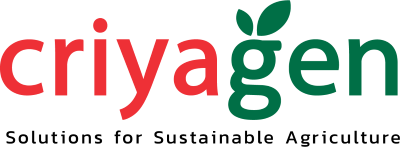SMART AGRICULTURE
Smart Agriculture a.k.a Smart Farming is a management concept focused on leveraging advanced technology like big data, the cloud and the internet of things (IoT) – for tracking, monitoring, automating and analysing agricultural operations. It is also known as Precision Agriculture. Smart Farming is software-managed and sensor-monitored. It is growing in importance due to the increasing demand for higher crop yield, the need to use natural resources efficiently, the rising use of information and communication technology and the increasing need for climate-smart agriculture.
Benefits of Smart Farming
Precision agriculture helps in reduction of overall costs, improve the quality as well as quantity of products, the sustainability of agriculture, Increasing control over production leads to better cost management and waste reduction. The ability to trace inconsistencies in crop growth or livestock health, for instance, helps eliminate the risk of losing yields. Moreover, automation boosts efficiency. With smart devices, multiple processes can be operated at the same time, and automated services enhance product quality and volume by better controlling production processes.
Smart farming systems also enables management of the demand forecast and delivery of goods to market in the right time to reduce waste. Precision agriculture is focused on managing the supply of land and based on its condition, concentrating on the right growing parameters. The types of precision farming systems implemented depend on the use of software for the management of the business. Control systems manage sensor input, delivering remote information for supply and decision support, in addition to the automation of machines and equipment for responding to emerging issues and production support.
Smart Farming and IoT-driven agriculture are laying the foundation for a “third green revolution,” which refers to the combined application of information and communications technologies. This includes devices such as precision equipment, IoT sensors and actuators, geo-positioning systems, unmanned aerial vehicles (UAVs) and robotics. IoT technology helps better control agricultural processes to reduce production risks and enhances the ability to foresee production results, which helps farmers better plan and distribute product. Service providers and mobile operators are modernizing their network infrastructure, bringing network resources to the edge and integrating far distances through technologies such as small cells and massive MIMO to get ready for the 5G roll-out.
Some of the IOT technologies in Agriculture are:
Robotics in Agriculture:
With increasing demand and shortage of labor across the globe, agriculture robots or commonly known as Agribots are starting to gain attention among farmers. Recent advancements in sensors and AI technology that lets machines train on their surroundings have made agrobots more notable. We are still in the early stages of an ag-robotics revolution, harnessing the full potential of the Internet of Things in agriculture, with most of the products still in early trial phases and R&D mode.
Drones in Agriculture:
Drones in agriculture are used to enhance and optimize various farming activities such as crop monitoring, crop spraying, soil analysis, and mapping. Drones equipped with sensors and cameras are used for imaging, mapping, and surveying farms. From the drone data, insights can be drawn regarding crop health, irrigation, spraying, planting, soil and field, plant counting, yield prediction, and much more. Drones can either be scheduled for farm surveys (drone as a service) or can be bought and stored near farms where they can be recharged and maintained. After the surveys, the drones need to be taken to nearby labs to analyze the data that has been collected, thereby helping leverage IoT in agriculture better.
Computer Imaging in Agriculture
Computer imaging involves the use of sensor cameras installed at different corners of the farm or drones equipped with cameras to produce images that undergo digital image processing. Digital image processing is the basic concept of processing an input image using computer algorithms. Image processing views the images in different spectral intensities such as infrared, compares the images obtained over a period of time, and detects anomalies, thus analyzing limiting factors and helping a better management of farms.

Leave a Reply